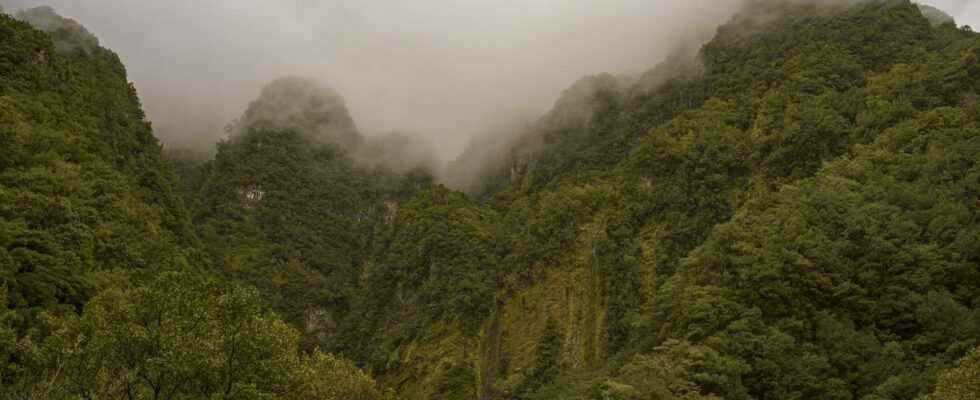Reportage“The Heralds of the Forests” (2/6). On the island off the coast of Portugal, the biologist Helder Spinola takes us into the “laurisilva” of his childhood. A unique and fragile ecosystem threatened by tourism.
That morning, a sea of clouds surrounded the salient reliefs of the north coast of the island of Madeira, off Portugal, on which it depends, and Africa. On these misty heights, the humid subtropical vegetation retains the evaporated water of the Atlantic Ocean. A few intense green bay leaves emerge intermittently from the water vapor that the trade winds push. On the ground, the thick arborescent heather blurs the track of the narrow forest path even more.
The sudden flight of a couple of trocaz pigeons with bluish plumage, a wild species endemic to the island, breaks the silence of the hiker immersed in this gentle dampness. So that’s what penetrating a living relic is. The laurisilva, “Laurisilva”, lauriferous forest of Madeira, is indeed a natural vestige inherited from the Tertiary era. Several tens of millions of years ago, this primary vegetation thus covered southern Europe and North Africa.
Preserved from the last glaciations by its oceanic climate, the archipelago of Macaronesia (Madeira, Canary Islands, Azores and Cape Verde) alone has preserved the remains of this precious laurel forest. Listed as a World Heritage Site by Unesco in 1999, the laurisilva of Madeira is the largest surviving portion, covering 20% of the surface of the island. In 1419, when Portuguese sailors landed there, they named the island “Madeira” (meaning wood): “At that time, the laurisilva occupied almost the entire area of the island. Colonization then gave rise to intense clearing for agriculture and logging. Fortunately, an early forest code will prevent the disappearance of this native forest”says Helder Spinola, a biologist specializing at the University of Madeira, who takes us into “his” forest.
Barely entered the green park of Queimadas, 850 meters above sea level in the northeast of the island, this forties is enthusiastic about a specimen in full health. “The laurel is a mother tree for me. He has always been with me. It gives life to the forest, shelters birds, insects, mosses. It plays the role of a protective umbrella for biodiversity”he explains, inexhaustible on his fetish tree, endowed with large glossy dark green leaves and creamy-white flowers that exhale an exquisite scent.
Since childhood, the laurisilva has been his playground. “With my brothers, we often went there to explore. Once, we got lost in the middle of the night… How scared we were!, he remembers smiling. Above all, I very quickly understood that this lush nature was not just a simple forest. »
You have 66.88% of this article left to read. The following is for subscribers only.
